Reading time: 5 minutes
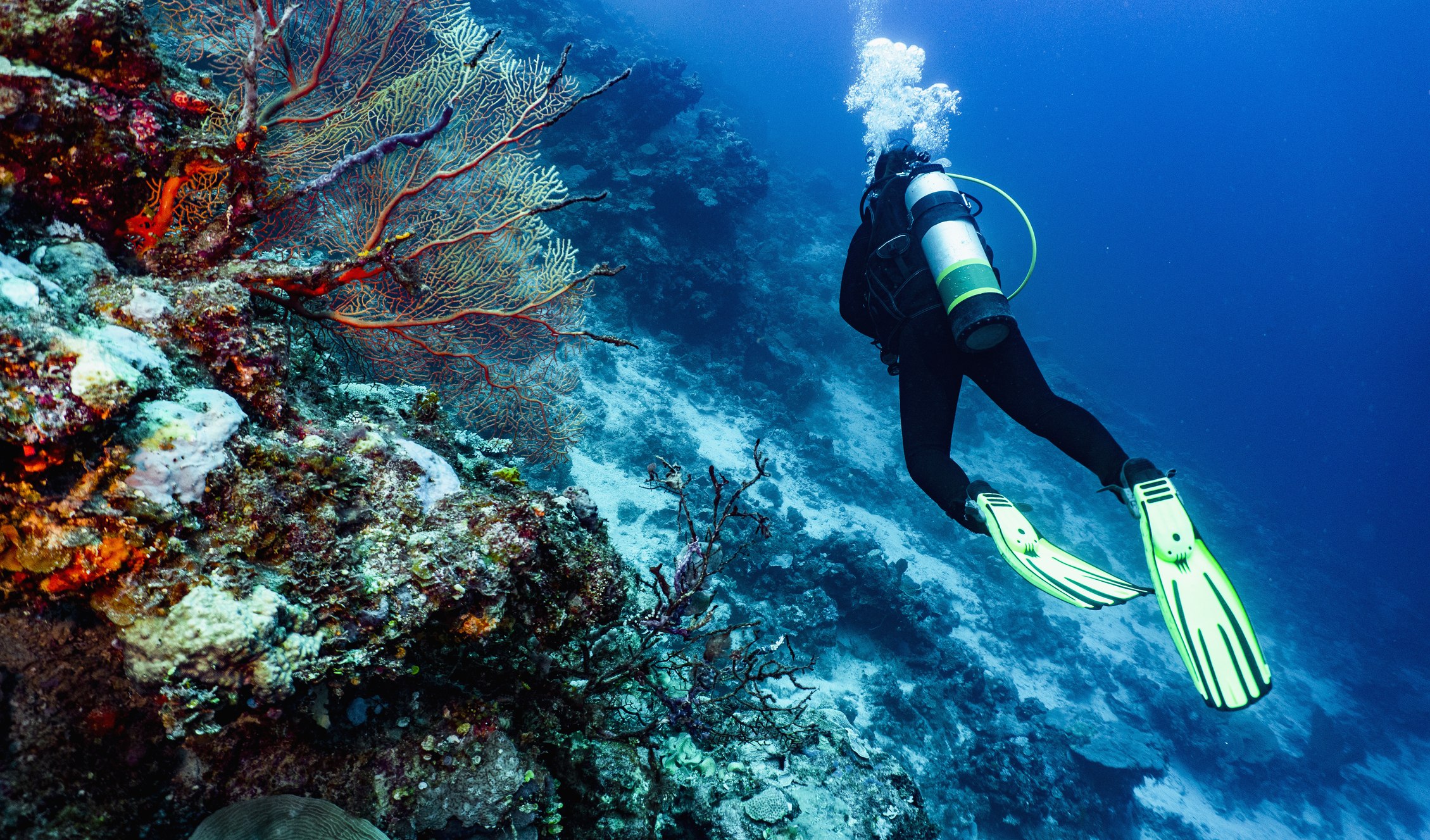
Whether you like to don a snorkel and flippers and peer at the marine life beneath you or you'd rather slip into a cold-water wetsuit and dive into the deep, these top dive sites have something for everyone.
Heron Island, QLD
There's no shortage of dive sites on the Great Barrier Reef – it covers a whopping 2300km, after all. Heron Island is a two-hour ferry ride from Gladstone and has more than 20 dive sites to choose from. Heron Bommie is best known for its manta rays, moray eels and reef sharks and the colourful Coral Gardens delivers on wow-factor. Travelling with non-divers? Snorkelling is sublime in the calm shallows right off the beach, even for the littlest adventurers.
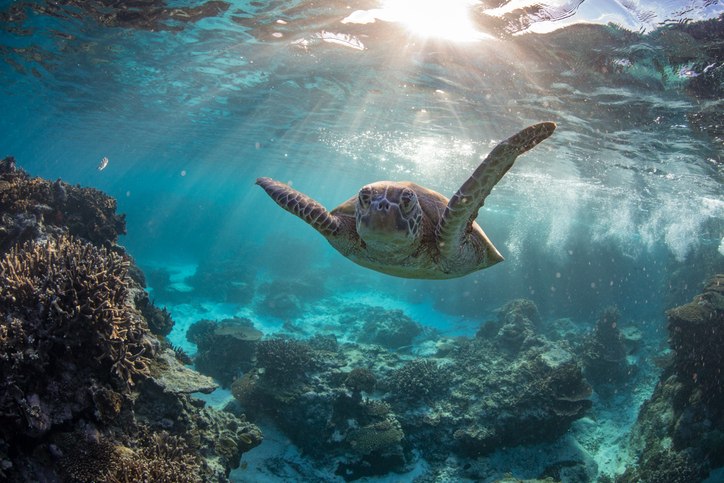
Photo credit Getty/Colin Baker
Osprey Reef, QLD
Just north of the Great Barrier Reef lies this gem of a dive site, and a live-aboard dive boat is the way to get there. An overnight journey out into the Coral Sea from Cairns will have you waking up to the wonders of a volcanic atoll and 40-metre visibility. By day, you can dive to an underwater amphitheatre to watch whitetip reef sharks feed, along with giant potato cod, dogtooth tuna and a variety of other sharks. By night, spot colourful parrotfish sleeping in transparent, home-made sleeping bags (for real!).
Lady Elliot Island, QLD
Its clear waters and amazing marine life make this dive site world class. Divers will come face to face with a variety of turtles, dolphins and manta rays, especially during the winter months. Blowhole, Hiros Cave and Anchor Bommie are well-known dive spots, but Lady Elliot Island lies in a highly protected Green Zone so the number of guests able to stay on the island is restricted. If the idea of swimming alongside humpback whales has you jumping up and down, visit between May and October. Hot tip: This island's coral outcrops and sheltered lagoon also makes it a winning snorkelling spot for all ages.
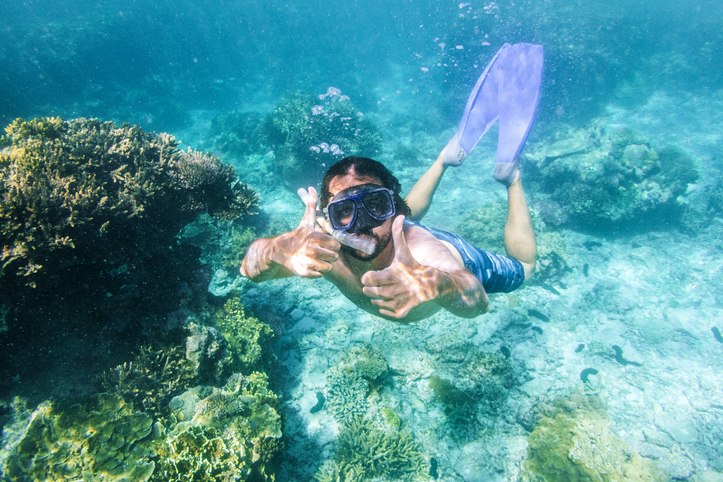
Photo credit Getty/Westend61
Kangaroo Island, SA
There's more to Australia than the Great Barrier Reef if you're into diving (or want to be). When you've finished gazing at the antics of sea lions and fur seals, get your wetsuit on and throw yourself in – Kangaroo Island has leafy sea dragons galore. These mesmerising critters are related to the sea horse and talented at camouflage, but local dive guides can show you exactly where to find them.
Ningaloo Reef, WA
World Heritage-listed Ningaloo Marine Park is right up there among the world's best places to dive with whale sharks, especially if you go between March and September. At up to 12 metres long, these marine giants are big enough to swallow you whole. Luckily, they prefer feasting on prawns, fish and plankton.
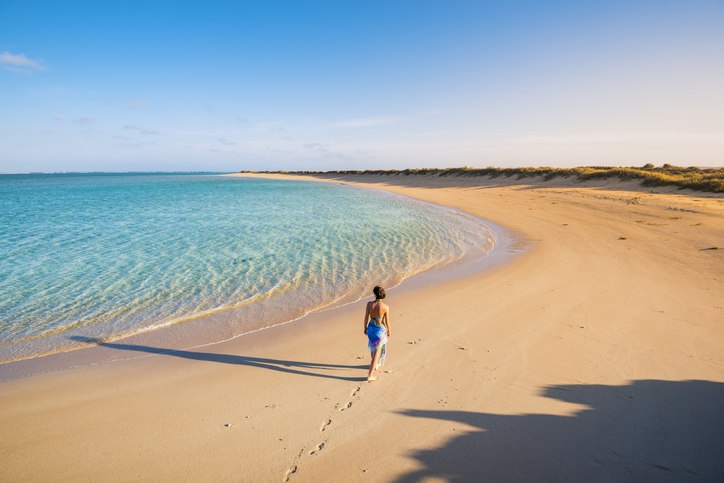
Photo credit Getty/© Marco Bottigelli
Lord Howe Island, NSW
Just 400 people are allowed to stay on this lush island at any one time, and there 60 dive sites to choose from. The waters around this island abound with 500 species of fish and 90 coral species. Advanced divers can explore the sea stacks and caves of Ball's Pyramid, but the reefs, trenches, caves and volcanic drop-offs have plenty to offer novice divers and snorkellers alike. Lord Howe Island is a two-hour flight from Port Macquarie.
Julian Rocks, NSW
Just a 10-minute jaunt by boat from Byron Bay, this is one of the world's best spots to learn to dive. The dozen or so dive sites, ranging in depth from six to 24 metres, will have you marvelling not just at manta rays and leopard sharks, but also around 1000 other marine species. Mind blown.
SS Yongala Wreck, QLD
One person's tragedy is another's treasure. The SS Yongala sank off Townsville during a cyclone in 1911, taking 122 lives with it. The ship, now an artificial reef, has created a home for an incredible array of tropical fish. You won't be the only one diving here (more than 10,000 divers marvel at this underwater wonder each year) but we don't think you'll mind sharing this awesome experience.
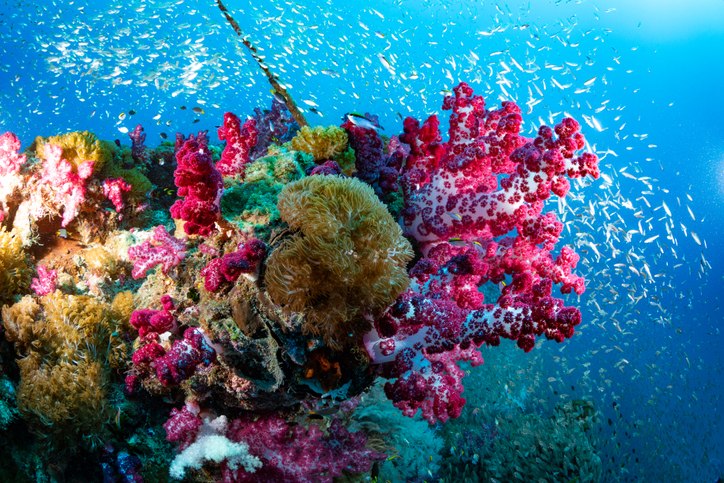
Photo credit Getty/Colin Baker
Looking for more ideas? Ayr in Queensland, Rye Pier in Victoria, Eyre Peninsula in South Australia and Fish Rock Cave in NSW are all well worth exploring.
What does travel insurance cover for scuba divers?
Regardless of your skill level, it's important to understand the coverage available before immersing yourself in the deep blue.
If something goes wrong cover is available for:
- Overseas medical expenses (international plans only)
- Medical evacuation to the nearest facility for treatment
- Treatment in a decompression chamber if medically necessary
- Accidentally lost, stolen or damaged diving gear
You won't be covered for:
- Risky or reckless behaviour – and that includes doing anything that could pose a risk to your personal safety.
- Diving outside of your qualifications. If you're a first timer, make sure you dive with a qualified instructor and if you're diving without an instructor, you must have the right open water qualifications and not dive beyond the depths and locations to which you've been qualified. That means no free diving, wreck diving or anything else beyond your licence.
- Diving under the influence – being intoxicated while diving is a bad idea and can affect any claims you may make.
- Disregarding/ignoring professional medical advice
- Accidentally lost or damaged diving gear while it's in use
Find out more here, and always read the PDS for full terms, conditions, limitations and exclusions.